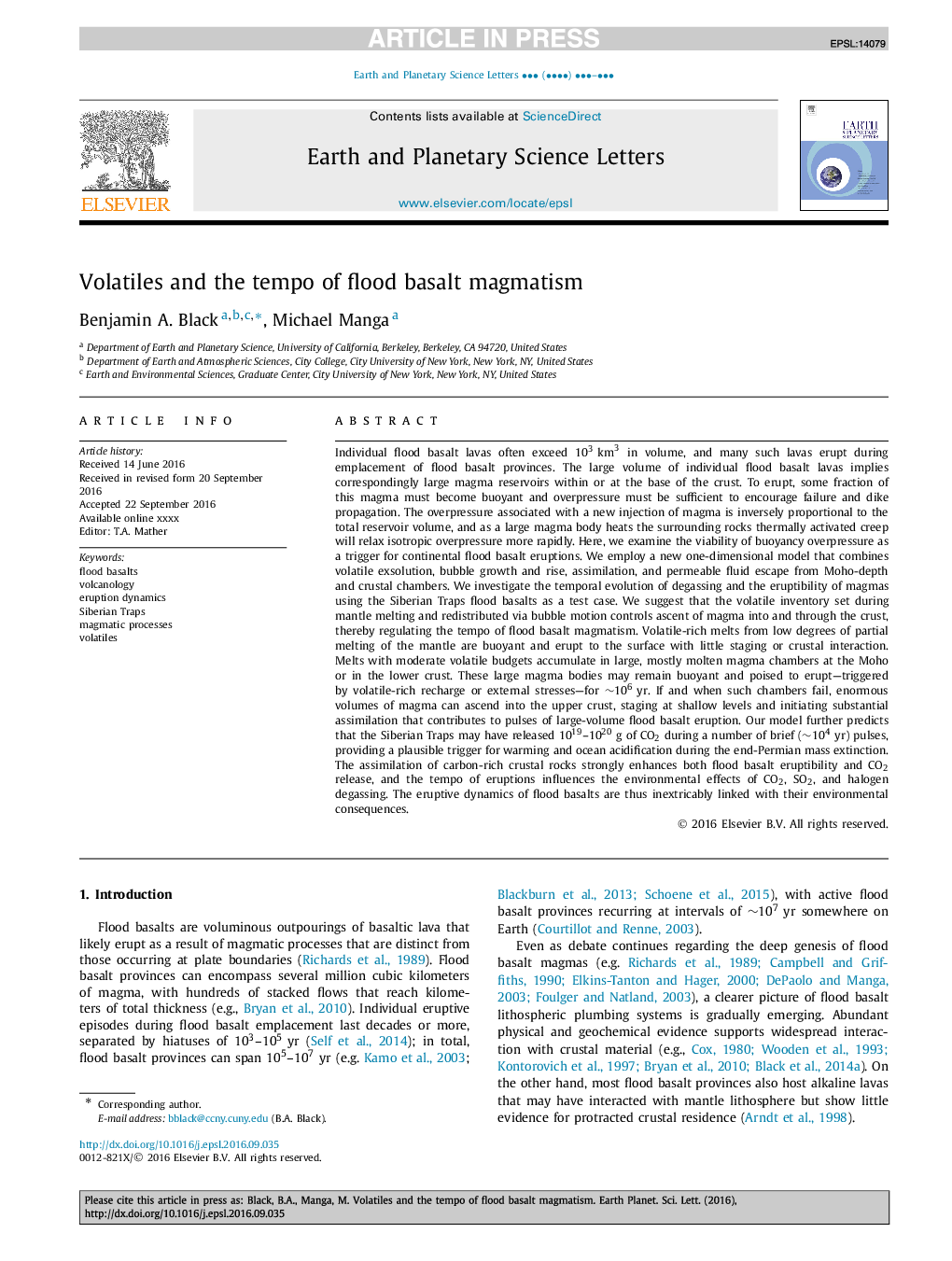| کد مقاله | کد نشریه | سال انتشار | مقاله انگلیسی | نسخه تمام متن |
|---|---|---|---|---|
| 5780008 | 1634698 | 2017 | 11 صفحه PDF | دانلود رایگان |
عنوان انگلیسی مقاله ISI
Volatiles and the tempo of flood basalt magmatism
ترجمه فارسی عنوان
فرار و سرعت ماگماتیسم بازالت است
دانلود مقاله + سفارش ترجمه
دانلود مقاله ISI انگلیسی
رایگان برای ایرانیان
کلمات کلیدی
بازالت سیل، آتشفشان، پویایی فوران، تله سیبری، فرآیندهای مغناطیسی، فرار،
موضوعات مرتبط
مهندسی و علوم پایه
علوم زمین و سیارات
علوم زمین و سیاره ای (عمومی)
چکیده انگلیسی
Individual flood basalt lavas often exceed 103Â km3 in volume, and many such lavas erupt during emplacement of flood basalt provinces. The large volume of individual flood basalt lavas implies correspondingly large magma reservoirs within or at the base of the crust. To erupt, some fraction of this magma must become buoyant and overpressure must be sufficient to encourage failure and dike propagation. The overpressure associated with a new injection of magma is inversely proportional to the total reservoir volume, and as a large magma body heats the surrounding rocks thermally activated creep will relax isotropic overpressure more rapidly. Here, we examine the viability of buoyancy overpressure as a trigger for continental flood basalt eruptions. We employ a new one-dimensional model that combines volatile exsolution, bubble growth and rise, assimilation, and permeable fluid escape from Moho-depth and crustal chambers. We investigate the temporal evolution of degassing and the eruptibility of magmas using the Siberian Traps flood basalts as a test case. We suggest that the volatile inventory set during mantle melting and redistributed via bubble motion controls ascent of magma into and through the crust, thereby regulating the tempo of flood basalt magmatism. Volatile-rich melts from low degrees of partial melting of the mantle are buoyant and erupt to the surface with little staging or crustal interaction. Melts with moderate volatile budgets accumulate in large, mostly molten magma chambers at the Moho or in the lower crust. These large magma bodies may remain buoyant and poised to erupt-triggered by volatile-rich recharge or external stresses-for â¼106Â yr. If and when such chambers fail, enormous volumes of magma can ascend into the upper crust, staging at shallow levels and initiating substantial assimilation that contributes to pulses of large-volume flood basalt eruption. Our model further predicts that the Siberian Traps may have released 1019-1020Â g of CO2 during a number of brief (â¼104Â yr) pulses, providing a plausible trigger for warming and ocean acidification during the end-Permian mass extinction. The assimilation of carbon-rich crustal rocks strongly enhances both flood basalt eruptibility and CO2 release, and the tempo of eruptions influences the environmental effects of CO2, SO2, and halogen degassing. The eruptive dynamics of flood basalts are thus inextricably linked with their environmental consequences.
ناشر
Database: Elsevier - ScienceDirect (ساینس دایرکت)
Journal: Earth and Planetary Science Letters - Volume 458, 15 January 2017, Pages 130-140
Journal: Earth and Planetary Science Letters - Volume 458, 15 January 2017, Pages 130-140
نویسندگان
Benjamin A. Black, Michael Manga,
